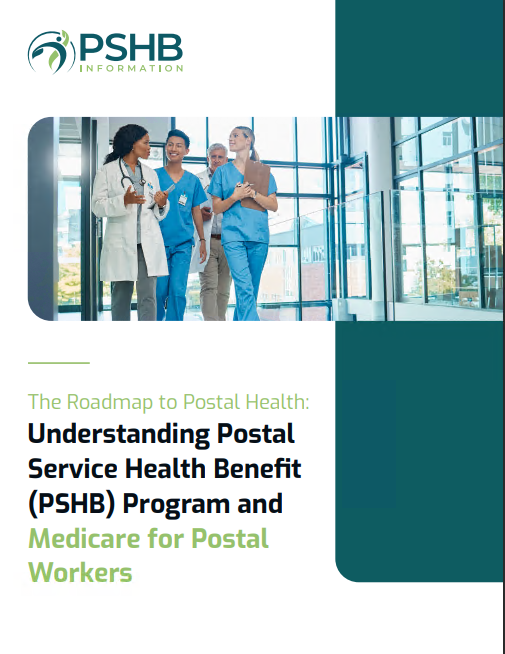Key Takeaways
- Postal employees must understand the differences between PSHB and FEHB before switching to ensure they make informed decisions that meet their needs.
- Evaluating coverage options, costs, and eligibility criteria can help postal employees choose the best plan for their unique circumstances.
PSHB vs. FEHB: What Postal Employees Need to Know Before Making the Switch
The Postal Service Health Benefits (PSHB) program and the Federal Employees Health Benefits (FEHB) program are two distinct health insurance options available to postal workers. While FEHB has been a cornerstone of federal employees’ healthcare for decades, the introduction of PSHB presents a new alternative specifically tailored for postal employees. Understanding the key differences between these two programs is crucial for postal workers considering making the switch from FEHB to PSHB. This article explores the essential aspects of each program, helping postal employees make informed decisions about their healthcare coverage.
What is the PSHB Program?
The Postal Service Health Benefits (PSHB) program is a newly created health insurance program designed exclusively for postal employees and retirees. This program was established as part of the Postal Service Reform Act, aiming to provide postal workers with healthcare options that better align with their unique needs. The PSHB program is expected to launch in January 2025, offering similar benefits to those provided under the FEHB program but with some critical differences that postal employees should consider.
Key Features of PSHB
PSHB is designed to mirror many of the benefits found in FEHB but is tailored to address the specific needs of postal employees. This program will cover active postal employees, retirees, and their eligible family members. One of the significant features of PSHB is that it allows postal retirees to enroll in Medicare Part B without facing late enrollment penalties, provided they do so during a special enrollment period.
Moreover, PSHB will integrate with Medicare for eligible retirees, ensuring comprehensive coverage by coordinating benefits between the two programs. This integration can lead to lower out-of-pocket costs for retirees, making it an attractive option for those nearing retirement.
Eligibility for PSHB
Eligibility for the PSHB program is similar to that of FEHB, with coverage available to current postal employees, retirees, and their families. However, there are some distinctions in how eligibility is determined, particularly for retirees. For instance, retirees who choose not to enroll in Medicare Part B may still access PSHB, but they might face higher premiums and cost-sharing responsibilities.
How Does FEHB Differ from PSHB?
The Federal Employees Health Benefits (FEHB) program has long been the standard for federal workers, offering a wide range of plans and benefits. Unlike PSHB, FEHB is available to all federal employees, not just postal workers. The program provides access to a broad network of healthcare providers, with various plan options ranging from Health Maintenance Organizations (HMOs) to Preferred Provider Organizations (PPOs).
Coverage and Benefits in FEHB
FEHB offers extensive coverage options, including medical, dental, and vision care. The program allows federal employees to choose from multiple health plans, giving them the flexibility to select a plan that best meets their healthcare needs and budget. These plans typically offer comprehensive coverage, including preventive care, hospital services, and prescription drug coverage.
In comparison, while PSHB aims to provide similar benefits, the program is specifically tailored to postal employees, which may result in differences in plan options and provider networks. Postal employees currently enrolled in FEHB should carefully evaluate how the benefits offered under PSHB compare to those they currently receive to determine whether switching is advantageous.
Cost Considerations: PSHB vs. FEHB
Cost is a critical factor for postal employees when deciding between PSHB and FEHB. Both programs offer employer contributions toward premiums, but the overall cost structure may differ. For example, under FEHB, postal employees benefit from the federal government’s substantial contributions to their health insurance premiums. However, PSHB might offer different contribution levels or premium structures, particularly for retirees who do not enroll in Medicare Part B.
Postal employees should closely examine the potential costs associated with each program, including premiums, deductibles, copayments, and coinsurance. Additionally, retirees need to consider how their choice between PSHB and FEHB will affect their Medicare integration and out-of-pocket costs.
What Should Postal Employees Consider Before Switching?
Before making the switch from FEHB to PSHB, postal employees must consider several key factors to ensure they make the best decision for their healthcare needs.
Plan Coverage and Network
One of the first things to consider is whether the healthcare providers and services you currently use are included in the PSHB plan‘s network. While PSHB aims to offer broad coverage, there may be differences in the provider networks compared to FEHB plans. Ensuring that your preferred doctors, hospitals, and specialists are in-network can help avoid unexpected out-of-pocket costs.
Retirement Planning
For postal employees nearing retirement, the decision between PSHB and FEHB can have long-term implications. As mentioned earlier, PSHB offers integration with Medicare, which can significantly reduce healthcare costs for retirees. However, it’s essential to understand how this integration works and whether enrolling in Medicare Part B is the best choice for your situation.
If you plan to retire soon, consider how your healthcare needs may change in the future and whether PSHB or FEHB offers better support for your post-retirement life. Retirees should also evaluate how their spouse’s coverage may be affected if they switch to PSHB.
Cost Analysis
Another critical consideration is conducting a thorough cost analysis. Compare the premiums, deductibles, copayments, and other out-of-pocket expenses between PSHB and FEHB plans. Take into account any changes in employer contributions or potential penalties for late enrollment in Medicare Part B if applicable. This analysis will help you determine which program offers the best value based on your healthcare needs and financial situation.
Flexibility and Stability
Consider the stability and flexibility of each program. FEHB has a long history and a well-established framework, which might appeal to those who value stability in their healthcare coverage. On the other hand, PSHB is a new program, and while it is designed specifically for postal employees, it may still undergo adjustments and changes as it is implemented.
Additionally, consider the flexibility each program offers in terms of changing plans or coverage options. FEHB allows annual open seasons where employees can switch plans if their healthcare needs change. It’s essential to understand whether PSHB will offer similar opportunities for flexibility.
The Future of Postal Employee Healthcare
As the PSHB program prepares to launch, postal employees face significant decisions regarding their healthcare coverage. The creation of PSHB marks a shift in how healthcare benefits are provided to postal workers, offering a program tailored to their unique needs but also introducing new variables that must be carefully evaluated.
Understanding the Transition Process
It’s important to note that the transition from FEHB to PSHB is not automatic for postal employees. Workers who wish to switch to PSHB must actively enroll in the program once it becomes available. During this transition period, postal employees should stay informed about enrollment deadlines, eligibility criteria, and any specific requirements to ensure a smooth transition.
Staying Informed and Seeking Guidance
Given the complexities involved in choosing between PSHB and FEHB, postal employees are encouraged to seek guidance from trusted sources. Consulting with a Licensed Insurance Agent who understands the nuances of both programs can provide valuable insights and help postal workers make informed decisions. Additionally, employees should regularly review updates from the U.S. Office of Personnel Management (OPM) and the United States Postal Service (USPS) to stay current on any changes or new information regarding PSHB.
Making the Right Choice for Your Healthcare Needs
Ultimately, the decision to switch from FEHB to PSHB is a personal one that depends on various factors, including your current healthcare needs, financial situation, and retirement plans. By thoroughly understanding the differences between these programs and carefully considering the potential impacts on your coverage and costs, you can make a well-informed choice that aligns with your long-term healthcare goals.
Postal employees should take the time to evaluate their options, seek professional advice, and consider their unique circumstances before making the switch. Whether you choose to stay with FEHB or transition to PSHB, the key is to ensure that your healthcare coverage provides the protection and peace of mind you need both now and in the future.
Contact Information:
Email: [email protected]
Phone: 6155552345






